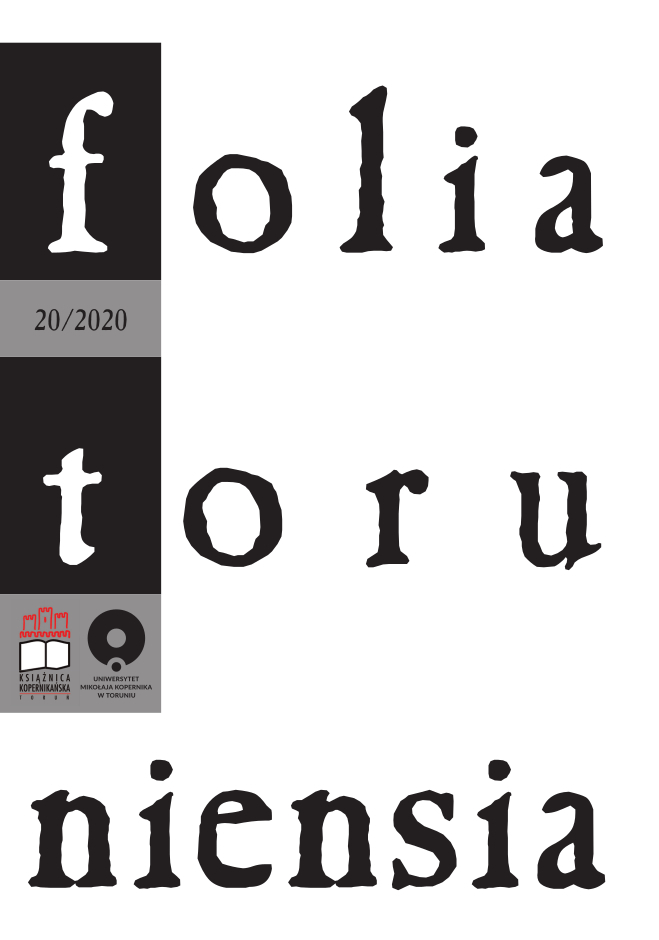Die karaitischen Gemeinschaften: Nutzung der mehrsprachigen Sprachstrategien für den Nationalismus
DOI:
https://doi.org/10.12775/FT.2020.004Schlagworte
Karäer, Polen, Sprachplanung, Seraja Szapszal, Türkisch, TürkeiAbstract
Schon am Ende des 19. Jahrhunderts begannen die Karäergemeinschaften der alten Republik Polen in ihrer Presse die Debatte darüber, welche Sprache als gemeinsam oder, wie man es bezeichnete, als Nationalsprache dienen sollte? Diese Frage war gültig noch in der ersten Hälfte des 20. Jahrhunderts. Man hielt sie für das Mittel zur sozialen und kulturellen Konsolidierung der Gemeinschaft sowie für einen wichtigen Aspekt ihres gesellschaftlichen Bildes in den Augen der polnischen Gesellschaft. Die Anführer der Karäergemeinschaft bedienten sich einiger Strategien, angefangen mit der traditionellen (hebräisch-türkischen) Zweisprachigkeit bis auf verschiedene Varianten von Russisch-Hebräisch, Polnisch-Türkisch etc. Diese Initiativen nahmen am Anfang des 20. Jahrhunderts, vor allem nach dem Ersten Weltkrieg an Stärke, als der ethnische Nationalismus sowohl unter den Karäern als auch in der dominierenden polnischen Gesellschaft geboren wurde. Die Analyse dieser Sprachstrategien wurde mithilfe von der modellhaften Sprachplanung Geoffrey Haigs, bearbeitet in der kurdischen Sprache in der modernen Türkei im Rahmen der Politik Kemal Atatürks (Mustafa Kemal Atatürk, 1881–1938), durchgeführt. Im Beitrag wies man eben auf diese Strategien hin, analysierte die Argumentation und schilderte die Sprachreformen der Karäergemeinschaft aus der ersten Hälfte des 20. Jahrhunderts. Man stellte fest, dass in der dominierenden Gesellschaft das Bild der Karäer eine wichtige Rolle im Entscheidungsprozess ihrer Anführer spielte. Man konnte bemerken, dass die Sprache nicht nur ein wichtiger Aspekt der kulturellen Identität der Karäer, sondern auch ein Mittel zur Integration mit der dominierenden Gesellschaft ist.Literaturhinweise
Author unknown. 1914. „The list of Holidays for the year 5674.” Karaimskoe Slovo 7-8:18.
Borbone, Pier Giorgio. 2011. “Choice of Script as a Mark of Cultural or/and National Identity.” In Myths, Heroes Gender and Identities. A CLIOHWORLD-CLIOHRES ISHA Reader 4, comp. A. Popa, B. Rentea, 177-188. CLIOHWORLD.
Geraci, Robert P. 2009. Window on the East: National and Imperial Identities in Late Tsarist Russia. Ithaca and London: Cornell University Press.
Haig, Geoffrey. 2005. „The Invisibilisation of Kurdish: the other side of language planning in Turkey.“ In Die Kurden: Studien zu ihrer Sprache, Geschichte und Kultur, ed. S. Conermann, G. Haig, 121-150. Schenefeld: EB-Verlag.
Hroch, Miroslav. 2012. Mažosios Europos tautos. Vilnius: Mintis. https://doi.org/10.1075/lplp.30.2.02seb.
Jagodzińska, Agnieszka. 2008. Pomiędzy. Akulturacja Żydów Warszawy w drugiej połowie XIX wieku. Wrocław: Wydawnictwo Uniwersytetu Wrocławskiego.
Kizilov, Mikhail. 2015. The Sons of Scripture. The Karaites in Poland and Lithuania in the Twentieth Century. Berlin: De Gruyter.
Kokizov, David. 1911. „Ruskij ili tatarskij.“ Karaimskaia Zhizn’ 2:35.
Letter by Karaite community to the Ministry of Religious Affairs and Public Education. sig. 1465. The Central Archives of Modern Records, Poland.
Letter by Karaite community to Wilno/Vilnius Voivode. sig. 1465. The Central Archives of Modern Records, Poland.
Michałowska – Mycielska, Anna. 2014. Sejm Żydów Litewskich (1623-1764). Warszawa: Dialog.
Pełtyn, Samuel. 1885. Projekt reformy w judaizmie ze szczególnym uwzględnieniem jego strony etycznej. Warszawa: Publisher not identified, typ. E. Skiwski.
Project of Legislation of Karaite community status in Poland. sig. 1462. Archiwum Akt Nowych w Warszawie, Poland.
Remarks by S. Szapszal for unknown reasons and without indicatedrecipient. sig. 1646. The Central Archives of Modern Records, Poland.
S. Szapszal to the Ministry of Religious Affairs and Public Education. sig. 1464. The Central Archives of Modern Records, Poland.
Sebba, Mark. 2006. “Ideology and Alphabets in the former USSR.” Language Problems and Language Planning, vol. 30, no. 2, pp. 99-125.
Shapira, Dan. 2003. “The Turkic languages and Literatures of East European Karaites.” In Karaite Judaism. A Guide to its History and Literary Sources (Handbook of Oriental Studies. Section 1: The Near and Middle East, vol. 73), ed. M. Polliack, 657- 658, Leiden: Brill.
Shapira, Dan. 2005. “A Jewish Pan-Turkist: Seraya Szapszał (Şapşaloğlu) and his work „Quirim Qaray Türklëri“ (1928) (Judeo-Turkica XIII).“ Acta Orientalia Hungaricae, 58: 349-380.
Staliūnas, Darius. 2009. Rusinimas: Lietuva ir Baltarusija po 1863 metų. Vilnius: Lietuvos istorijos institutas.
Troskovaitė, Dovilė. 2014. „Lenkijos ir Lietuvos karaimų savivokos formavimas XIX a. vid. – XX a. pirmoje pusėje: tarp atsiskyrimo ir prisitaikymo.“ PhD thiss., Klaipėda university.
Tuna, Mustafa Özgür. 2002. „Gaspirali v. Il'Minskii: Two Identity Projects for the Muslims of the Russian Empire.“ Nationalities Papers 20(2):265-289. https://doi.org/10.1080/00905990220140658.
Writing of the governmental representative in Wilno/Vilnius region. sig. 1461. The Central Archives of Modern Records, Poland.
Downloads
Veröffentlicht
Zitationsvorschlag
Ausgabe
Rubrik
Lizenz
Authors sign the license agreement, where authors have copyright but license exclusive rights in their article to the publisher. In this case authors have a range of rights, including:
- The right to share or reuse their article in the same ways permitted to third parties under the Creative Commons Attribution-NoDerivatives 4.0 (CC BY-ND 4.0) license. Following it, the author can "copy and redistribute the material in any medium or format for any purpose, even commercially. The licensor cannot revoke these freedoms as long as you follow the license terms."
- Authors retain patent, trademark and other intellectual property rights (including research data).
- Authors receive proper attribution and credit for the published work.
![]()
Stats
Number of views and downloads: 679
Number of citations: 0



